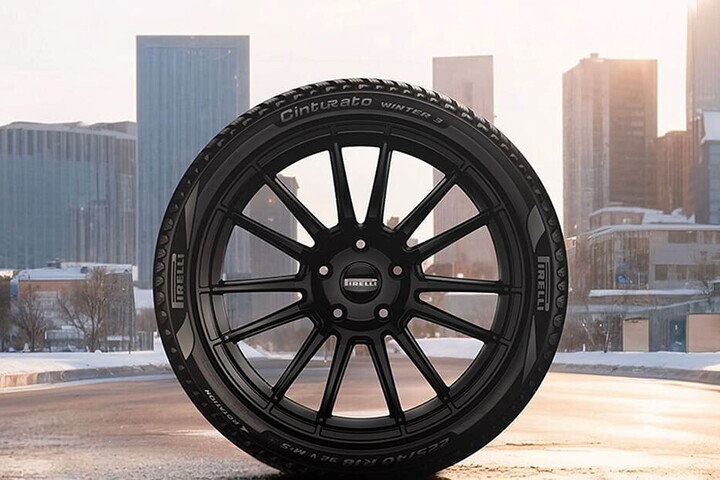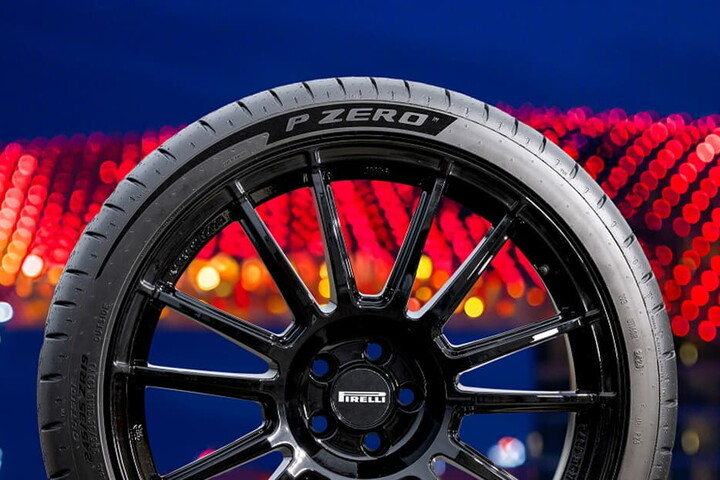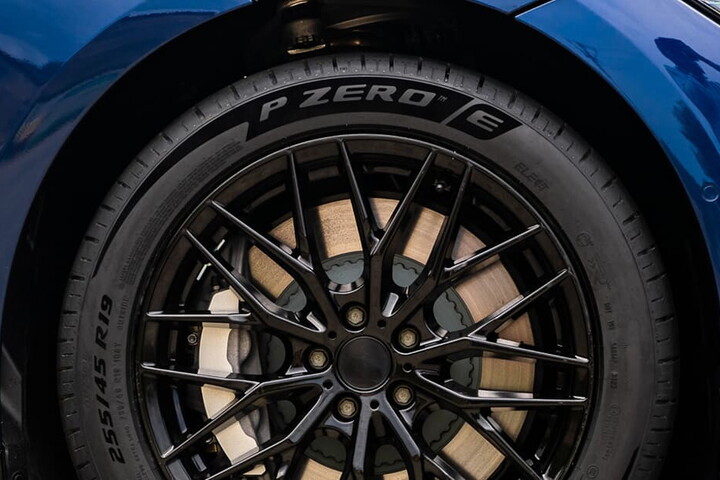
Shaping a tyre tread is endeavour in balance between engineering and appearance. In brief, a tyre must be "gripping and beautiful" The shape cannot be just visually attractive because more importantly it must provide the most grip and operating constancy on the road as intended in design and construction.
For each single aspect of a tyre, Pirelli engineers use specific calibration systems to simulate the behaviour of each material and the applied solutions during development before making prototypes to be tested on the road. These extensive trials provide indications on performance of the tyre and on efficiency of the pattern itself. For this reason, course, road surface, temperatures and other parameters are carefully selected to accurately analyse the behaviour of the prototype.
At the end of the first comprehensive test phase, the data collected from the various products subjected to many kilometres of use are analysed and Pirelli performs the first of many selections aimed at pinpointing the models with the most effective behaviour and with the most pleasing appearance. This latter aspect, tyre design, is just as important for those tyres made for the most exclusive supercars in the world, like the most recent Pirelli P Zero range. Research ends with a final test also on the proving grounds. If the results fulfil all expectations, the prototype becomes a product to be marketed.
The tyre-road contact area can hardly be taken for granted and it is not even similar from manufacturer to manufacturer. Each manufacturer has its own principles, engineering needs, care for detail, style and goals to be achieved. Precisely for this reason, each product has a precise, sophisticated and carefully designed pattern according to the intended use of the tyre and its construction materials. These elements make it possible to obtain the best efficiency in terms of safety and road efficiency with a focus on fuel consumption and running costs. The latter key aspect is held in the highest consideration by users of vehicles. The tread pattern distributed on the most crucial area of the tyre, which only slightly larger than the palm of an adult's hand, is fundamental for a number of reasons. These may be summarised also in terms of high driving quality and safety in tricky conditions.

On dry roads, for instance, a tread designed to provide rigidity will allow the tyre to transmit confidence on corners and ensure very effective holding. A result like this is achieved also considering other factors, such as the limited presence of grooves and the use of large-sized blocks which contribute to amplifying the rigidity of the structure and consequently a contact surface aimed at providing the best possible traction. Conversely, the presence of more marked grooves and sipes amplifies water discharge at various speeds to the advantage of safety in case of rain. In this case, the different tread design – directional, asymmetrical or symmetrical – determines the degree of water evacuation and improves the balance or the tendency to privilege multiple aspects, such as high performance and efficiency constancy, which characterise the various pattern types.
For the sake of simplicity, the tyre pattern categories mentioned above are the combination of various tyre tread types: directional, asymmetrical and symmetrical.
The first, also known as unidirectional, is a typical tread characterised by a pattern drawn in the same direction, e.g. V-shaped, designed to ensure high grip on wet roads and slippery surfaces, such as mud and snow, when high traction is needed. This pattern ensures fast and efficient sideward ejection of water or slush, thus contributing to amplifying road-holding and consequently safety by avoiding dangerous aquaplaning.
Asymmetrical treads, on the other hand, are characterised by various types of grooves on the surface, which can be observed according to the part of the wheels on which attention is focused. Considering the pattern variety, these tyres have very high road-holding capabilities on various terrain consequent to its versatility of use and performance, while maximising safety on wet and slippery surfaces. Given these features, particular care must be devoted to fitting these tyres because the different pattern on the inner and outer areas may condition driving. The inner section is normally characterised by many smaller blocks to ensure higher efficiency on moist, slippery roads, while on the outside, the dimensions are larger to ensure greater stability and cornering efficiency.
Finally, symmetrical tyres, as the name suggests, have the same pattern across the entire tyre. The same shape on the inside and outside means high levels of efficiency, speed and road safety.
The tyre tread patterns are fundamental for improving the vehicle and its performance on the road. They influence and lower the rolling resistance and the wet traction and, depending on the type of tyres used, they lower the width of suspension. Car manufacturers are producing tread patterns to guarantee an ever increasing level of performance and change the quality of driving: for example, they are developing tread patterns for electric cars which employ ground energy or, other kind of tyres that increase the maximum weight supported by trucks and all kind of vehicles. The tread pattern also influences the temperature of the tyre in touch with the road and some special patterns are able to lower the heat of the tyre for a more performant drive.




